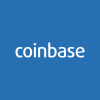So now that you understand that Ethereum is a network for building decentralized applications that require a cryptocurrency called Ether to run, I’m going to introduce a confusing concept. Many dApps built on Ethereum have their own cryptocurrencies or “tokens.” In order to interact with the dApps, customers need to purchase the dApp’s native token.
Here’s a helpful analogy I came across – when you go to a waterpark, you pay the admission fee and in return, you get a wristband. That wristband gives you the ability to ride the waterslides in the water park. With certain dApps, the token is the wristband, and a user must purchase it to interact with whatever the dApp offers.
Let’s take a dApp called Golem as an example. Golem lets people rent out their excess computing power to people who need it – kind of like a computer AirBnb. To cite this article from Laura Shin, if I’m a computer graphics artist that wants to render some kind of computationally intense animation, I can purchase Golem tokens that let me tap into the Golem network to generate my animation. I then pay the people who are renting me their computers with the Golem tokens. The Golem token is a form of smart contract and this transaction is recorded on the Ethereum blockchain.
Since Golem tokens are also a cryptocurrency, they can be traded on the free market. If I’m a speculator who has no intention of using the Golem network to rent computing power, I can still buy the Golem token on an exchange in hopes that it appreciates in value. Like bitcoin, there is a fixed supply of Golem tokens so if the demand for the service increases, so will the value of the token. If I bought Golem at its original price of around 1 penny and held it to today, I would have made 35X my initial investment since Golem tokens currently trade around 35 cents a piece.



